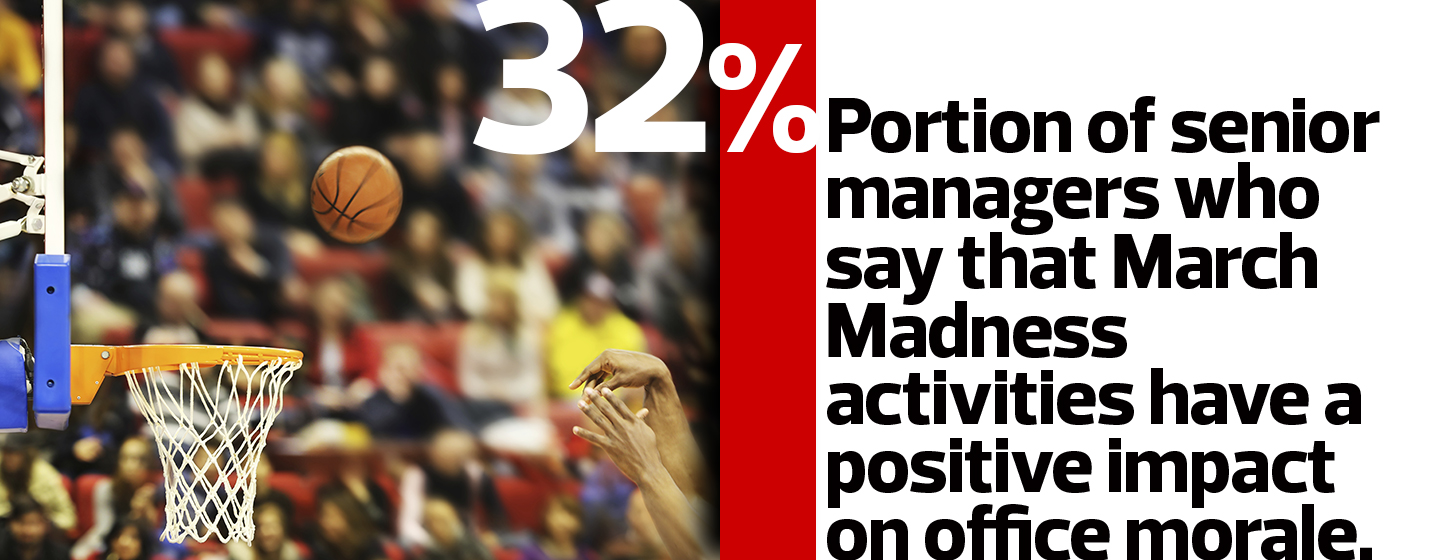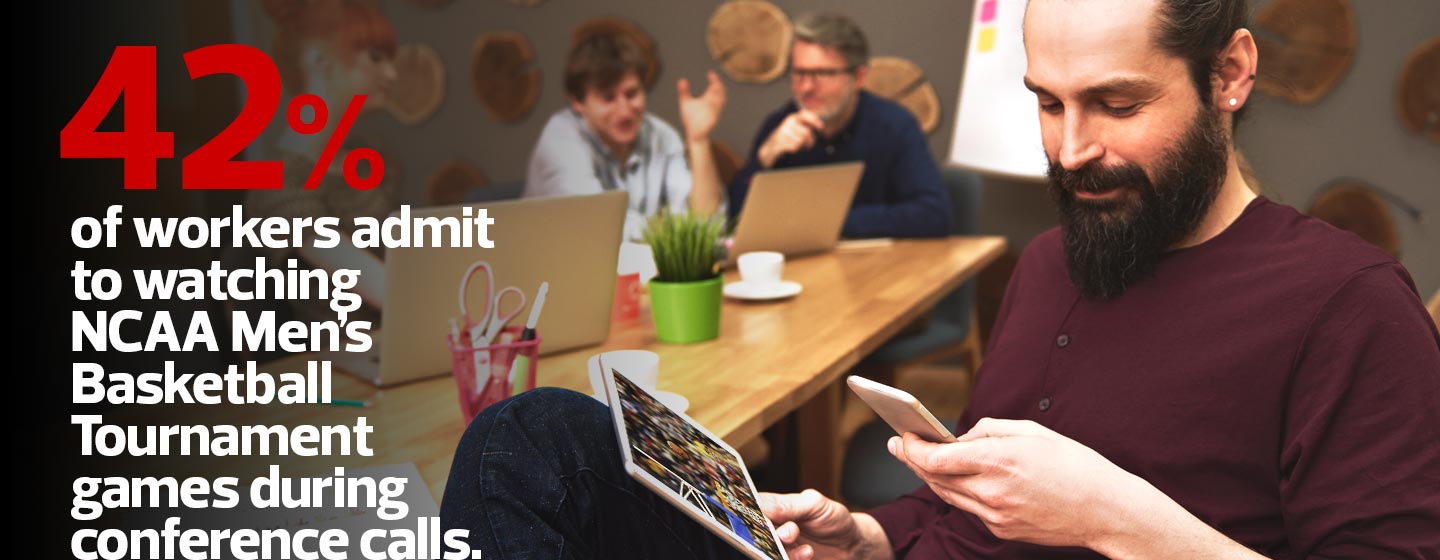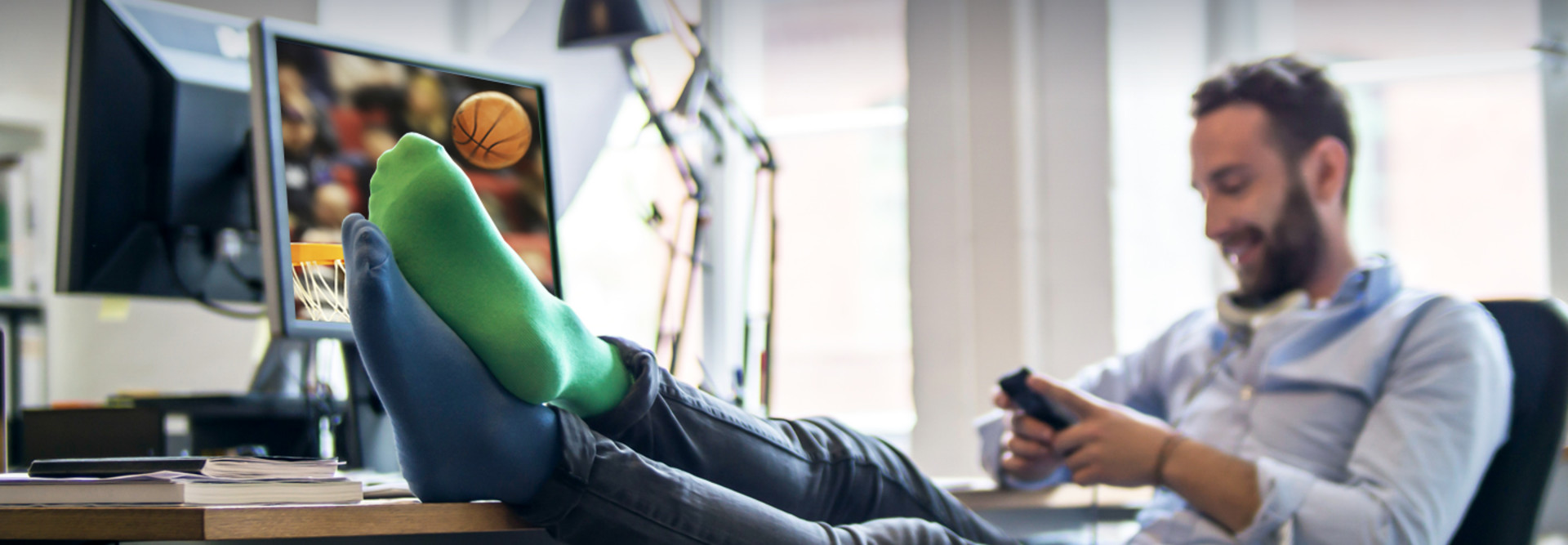How March Madness Can Hurt (or Help) Office Productivity
A wiry player from a small-school Cinderella team hits a 3-pointer at the buzzer, sending a game into overtime, and the entire office cheers (well except for the ones whose brackets have been busted).
Meanwhile, managers bite their lips. They don’t want to break up the fun, but they know that the overtime period is going to eat away more productive minutes on a day when workers have already spent too much time worrying about the fates of Duke and North Carolina and not enough getting their projects done.
It’s a scenario that plays out across the country each March, when millions of fans fill out their 68-team brackets and rabidly follow the NCAA Men’s Basketball Tournament to monitor their standing in their office pool. The cost of this lost productivity is real, but some employment experts say tournament fun can provide a morale boost and warn that cracking down too much can backfire.
“It’s gotten pretty hard to stop people from participating in March Madness,” says Andrew Challenger, vice president of the global outplacement consultancy Challenger, Gray & Christmas Inc. “It’s one of those situations where you might as well embrace it as a company, especially in the employment environment we’re in right now. With unemployment at 4.9 percent, companies are really fighting to retain the best workers, and culture is a big piece of that, especially for younger workers.”
Mobile Technology Empowers Workers to Stream Whenever, Wherever
Each year, Challenger, Gray & Christmas estimates how much March Madness will cost companies in lost productivity. For 2016, the number is an eye-popping $3.9 billion. The firm estimates that 50.5 million workers across the country will fill out a tournament bracket and “conservatively” estimates that each of these workers will spend at least an hour completing the bracket and two hours watching games at work.
“We live in an age of distractions, and people have their smartphones with them at all times,” Challenger says. “This is something different. It really does get the office all worked up, and people really do spend time researching their picks, filling out their brackets and then actually streaming the games. It really is costly to employers.”
But, he notes, it’s become increasingly difficult to completely prevent workers from watching games at work if they’re determined to do so. While companies can block access to sports sites or even prevent live streaming completely, many enthusiasts have their own smart devices with LTE connections.
“Ten years ago, you had to leave the office to go watch the game, and people did,” Challenger says. “But today, you can get it on every desktop in the office, on your smartphone, on your tablet. You can watch it on your Apple Watch. It’s everywhere. It’s totally permeated the workplace.”
Why Companies Should Embrace the Streaming Madness
Instead of fighting March Madness, Challenger recommends that companies set up a TV tuned to the games in a common area such as a break room, so workers aren’t forced to covertly multitask at their desks. At his firm, managers even set up the office pool and give away a gift card to the winner, which helps eliminate illegal gambling among employees.

SOURCE: “No Harm, No Foul?” OfficeTeam, March 2016
Jerome Hernandez, director of information technology at the finance and investment firm Alliant Capital, is setting up a Chromecast stream on a TV in the office, so people can watch the games if they want to, he says.
Hernandez monitors streaming but only has conversations with employees about it if this activity becomes a problem.
“Unless, it’s the [company] president,” he says. “I know for a fact the games are going to be on in my president’s office.”
Before making any firm decisions on allowing or banning March Madness streaming in the office, companies should carefully weigh all the pros and cons of both scenarios.
“You have to balance it,” advises Jay Starkman, CEO of the Florida-based human resources outsourcing firm Engage PEO. “You don’t want to be that one employer that says March is not the time to be watching college basketball. Some folks would call that un-American. But at the same time, you can’t tolerate people taking off huge blocks of hours to watch.”
Starkman says that companies can walk this fine line by clearly communicating expectations during tournament season and by treating time-wasters in March the same way they would treat them at any other time of the year.
“If you wouldn’t have censured them for going on Facebook, don’t discipline them for going on ESPN,” he says. “But if you would have disciplined them for going on Facebook for an hour, you have the same conversation for spending an hour streaming a college basketball game. That’s just smart HR management.”
Starting a New March Madness Tradition
Matthew Mercuri, a digital marketing manager at steam-cleaner maker Dupray Inc., decided last year to put a few NCAA Tournament games on the office radio for his eight-person team. And, for the first time, workers were also allowed to stream games on one of their two computer monitors.
“It was going to be a one-time thing,” Mercuri says. “But we were actually more productive when we were doing what we wanted to, instead of alt-tabbing [to close streaming windows before bosses could see them] or watching on our phones.”

SOURCE: “Survey: Employees Won’t Put NCAA Tournament on Hold,” InterCall, March 2015
In previous years, Mercuri says, he would walk around the office and see streaming windows “pop up and pop down” as employees tried to look busy. This covert watching actually seemed to distract them more than when they were allowed to openly listen to and watch the games, he notes.
With the rules relaxed, one employee – a big Michigan State fan – watched the Spartans’ games but had no interest in any of the other teams in the tournament. A few other hoops fans watched more voraciously, but they stayed at the office late to finish up their work. Ultimately, Mercuri’s team finished two large projects ahead of schedule while the tournament was going on.
“They felt like it was a really good environment where they could do two things at once,” Mercuri says. “When leaders or bosses give a perk to employees, they want to pay it back. The people who work here aren’t here to leech off the company. We have a good team.”
As for a “good team” to pick in the tournament? Mercuri is less certain about that. “Uh … Kansas, probably?”
To learn more about how technology is changing college basketball, check out the other stories in our March Madness 2016 content series.









